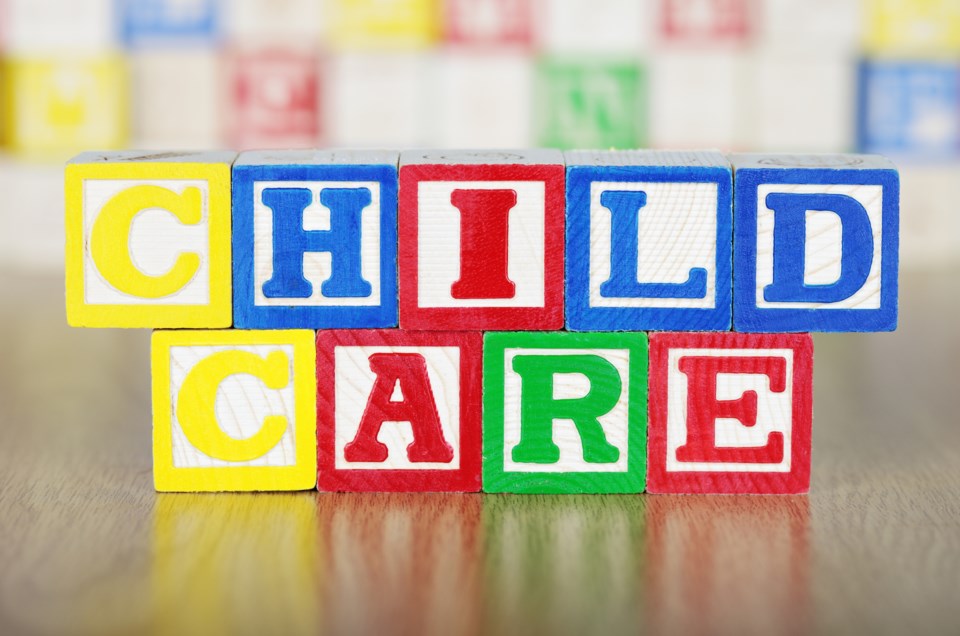The $10 per day Canada Wide Early Learning and Child Care program will be coming to Waterloo Region.
Just not quite yet.
The region is working towards a goal of reaching the financial mark by 2025, with steps along the way to significantly reduce the financial burden child care puts on families.
A report is being submitted to the Community and Health Services Committee that recommends a 52.75 per cent decrease in child care costs beginning Jan. 1, 2023. The decrease would result in an average monthly savings of $300 per family accessing home child care for a toddler.
The ability to provide significant financial relief to families is something that means a lot to Barbara Cardow, the director of children's services at Region of Waterloo.
“It’s probably a once in a generation investment in early years that is going to benefit so many families,” Cardow says.
“We know the cost of child care is the single most challenging part of a parent's child care experience. The cost has historically kept people away from returning to work or going to school. This will open the doors for many families so their children can experience early care.”
Any changes to bylaws, including fees, must be approved by council. The region serves as the system manager for child care and is responsible for rolling out the CWELCC plan, which includes the reduction. Cardow thinks it's fair to say it’s unlikely the recommendation would not be approved.
According to Cardow, of the 202 child care sites spread around the region, all but three have opted in to the program.
So while the costs of child care may be getting cut in half come the new year, it's going to take longer to get to $10 per day.
It comes down to the allocation of funding, Cardow says.
“It’s how we’ve been directed to roll out the program by the province in regard to funding.”
“It was the federal government who created the program. They then flow funding to the province and they create the guidelines that flows down to the municipalities. It’s about the approach the province has selected to get the funds to child care programs. I assume it would be based on access to funding.”
Cardow understands why some residents may be frustrated by the slow pace of reaching the $10 per day plan, but says the region will continue to work with the province to ensure further reductions occur.
The program doesn’t come without its challenges, however.
The first being the region currently doesn’t have enough child care spaces to meet an increased demand.
“For the 0-4 age group, we only have enough spaces for 24 percent of children,” Cardow said.
“We think we need to raise that to 40 per cent access.”
A 15 per cent increase means an additional 3,500 spaces for children.
That may seem like a lot, and it is, but the program is working on how to solve the problem. Part of the program is looking at growth but the region is still waiting on more information on how exactly it will work and where the funding will come from for potential expansion.
As far as where to find space, Cardow says the region will look for existing spaces and partnerships to fill the need. For instance, new schools or any other facility that could have a need for child care services will be considered.
“We’re looking at what else we have being built where child care space could be added and that could be operated in the space,” Cardow says.
“We’re also looking at areas we know need child care and encouraging policies for child care operators to open where there’s a need. It’s high level right now.”
The second issue, and just as concerning, is staffing. There’s currently a shortage of early childhood educators needed to meet the demand that is sure to increase as fees drop.
Cardow and her team are working towards solving that problem, as well. A year ago it was estimated that the region would need approximately 450 additional ECE’s, a number that Cardow feels hasn’t really changed.
“We've received funding to create strategies and build the workforce,” she says.
“We continue to work with childhood educators and Conestoga College to help us increase the number of registered ECEs.”
While there are issues to iron out and the fees may not be dropping quite as quickly as some residents may have hoped, Cardow preaches patience as all the aspects of the program are worked out.
“The good news is the fees are gradually going down,” she says.
“I’m really excited about it.”



